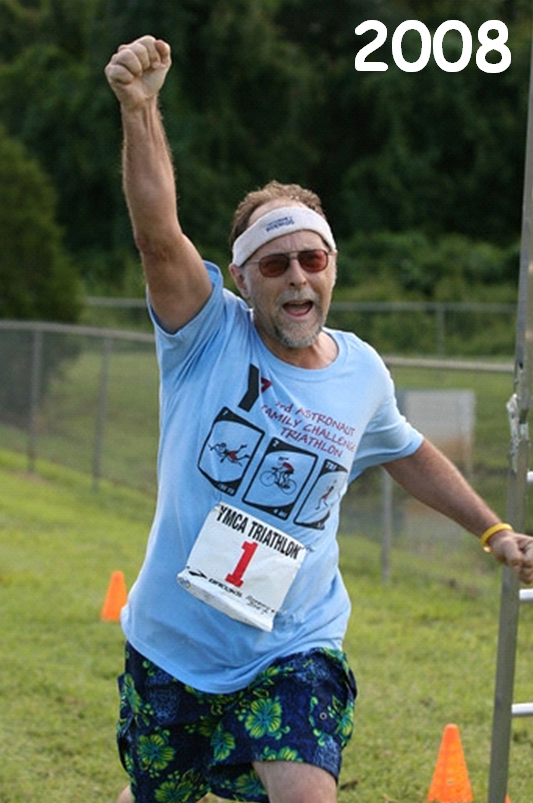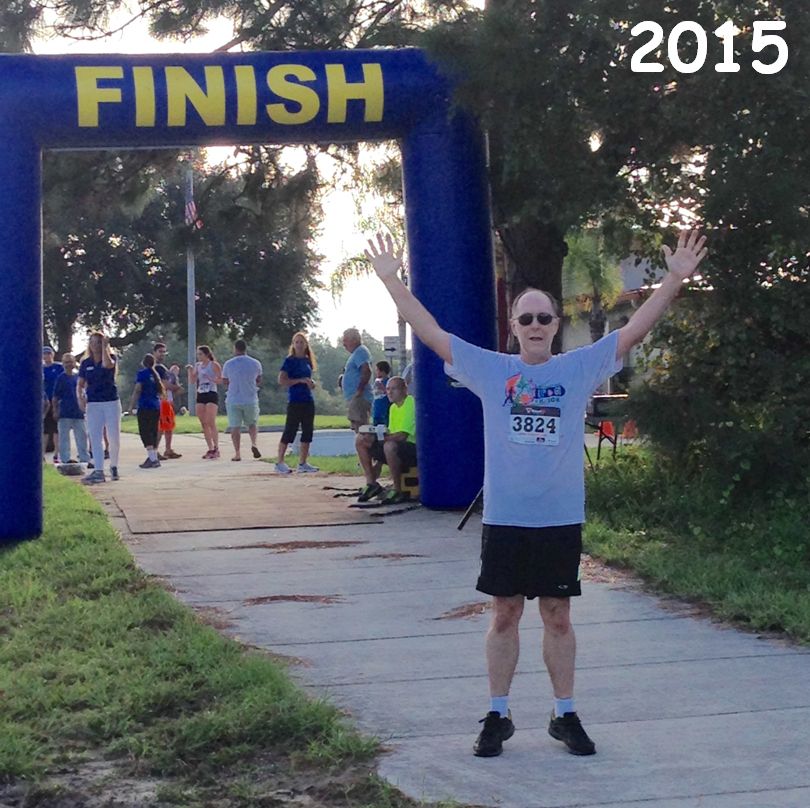Article
Transplants and Triathlons: An Unwelcome Tradition
Two transplants, three mini triathons. Running the race for myself and others shows how lessons learned in the hospital translate to victory on the outside.
I approach this article with a healthy amount of trepidation. In my exuberance at (very probably) beating cancer after a ten-year battle, I walk a delicate line in my public commentary. On the one hand, I feel a deep calling to be a source of encouragement to those in the darkest part of their battle. On the other hand, we all know that some of us aren’t going to make it. Rather than encouraging, I might seem braggy — or worse, depressing — to those that might not leave the Valley of the Shadow.
That said, for this post, I’m going to take the risk and share what is possible for some of us, and hope that it shows those at the toughest part of their struggle that there really can be an exit from the darkness.
I never was an athlete as a kid. In PE class, I wasn’t even the last choice. I wasn’t even part of the-rest-play-right-field group.
I sometimes had to hear, “Ah, man, you take Kevin. I had to have him last time.”
As I got older, I did manage to survive some company recreational sports leagues, only sticking with it because of the single females. It wasn’t until I was in my 40s and well established as an active dad that I found out that I had some level of ability as a runner.
Let me be clear: I hate running. I’ve been doing it off and on for 20 years, have finished dozens of 5K runs and have (sometimes) finished higher than last in my age group. In fact, I'm pretty competitive in the women’s 70- to 79-year-old bracket. In one of my most shining moments, after my first transplant, as a 50-year-old, I completely passed a 75-year-old former nun who did the race carrying her purse. I came in right behind a 65-year-old man with one lung and just did beat out a 72-year-old who had to tape his kneecaps in place.
Still, despite my utter and bitter hatred of running, I love the camaraderie, the support for anyone who just tries and the feeling of accomplishment when I hit the three-mile mark and realize, despite a fearful level of gasping, staggering and sweating, that I’m going to finish. (One frightened young runner said he thought he being run over by an asthmatic train).
But, when in the hospital for transplant no. 1, I held close to the vision set out in 2 Timothy 4:7 — “I have fought the good fight, I have finished the race, I have kept the faith.”
The vision of rounding the corner after a hard fought three miles, seeing the finish line, with crowds cheering my accomplishment, was in my mind night after night. I returned to “normal life” six months later, in October 2006. A few months later, my 12-year-old son and I did my first 5K “after.” He finished before I did. When I rounded the last corner, there he was cheering for me. He ran alongside, encouraging me, racing me to the finish line, then peeling off so I could cross alone. I get teary to this day, thinking of the glory of that moment.
2008

Later that year, I teamed up with two other survivors as a relay team in a mini triathlon. I swam, my cancer buddy (second time with colon cancer) biked and a courageous woman recovering from breast cancer surgery ran. In 2008, I did the whole thing by myself. To a “real” athlete, doing a 100-meter swim, four-mile bike ride, and two-mile run is trivial. To me, it was a huge victory. We’d set up a special session of this event for cancer survivors and their families, so racing with over 100 victims really moved me. I was awarded the honor of wearing no. 1, and sure felt like it!
As I prepped for my second transplant, I did eight runs in a year. I ran hard, knowing fitness is a key determinate in surviving this horrific process. In the hospital earlier this year, I walked and walked and walked. Up and down the halls, often three miles a day. Sometimes, on bad days, I could only do a mile in four increments. A few times, I couldn’t leave the room. (See Well, That Wasn't The Way This Day Was Planned!). Shortly after I moved to Hope Lodge, I did a virtual two-mile race with my work group, them at Kennedy Space Center and me in the hallways. It took me two sessions, but I made it.
All through my hospitalization, I thought about how I’d done the 5K, then the two triathlons the last time. I vowed to get back into running, but I didn’t realize how soon. I was blessed to have an amazingly quick recovery. Within five months, I was running a bit. Then I noticed my local triathlon was scheduled for early October. I thought short and hard about it, then signed up. From July through September, I practiced hard. Swimming one day, biking the next, running the next. I started to really get in shape, but worried about being able to finish.
Race day arrived on October 3. I had set myself very conservative goals:
- Basic goal: Finish. Run, walk or crawl.
- Stretch goal: Beat the one-hour mark.
- Unachievable goal: Get as close to 50 minutes as I could.
2015

Long a painful story short: I finished in 45 minutes, 50 seconds. Out there on the course, whenever my mind and body began to flag, I forced myself to go back. Sitting in a recliner, on oxygen, barely able to breathe, my feet hugely swollen. Having diarrhea, day after day, twenty times every 24 hours. Not eating a single bite for a week, losing 30 pounds in a month. Barely being able to walk from our Hope Lodge room to the front door.
I owed it to myself, and to all of you who can’t run for yourself, to dig deep and find the grit and tolerance for pain and understanding of what the walk through the Valley means. Any cancer patient will say that they’d rather run many miles than sit one hour in the chemo chair. Well, I had the chance to prove that we can.
For you, my brothers and sisters in cancer, I try to live 2 Timothy 4:7. I fight the good fight, I finish the race, I keep the faith. God Bless us, each and every one.
Besides the other wonderful blogs on Cure Today’s site, I hope you'll visit my Taking Vienna site. I also recommend T.J. and Jen Sharpe’s blog, Patient #1. For cancer patients and caregivers, and melanoma patients in particular, it’s a great resource. I also encourage readers to visit the Be The Match site to learn about registering as a potential stem cell donor.




